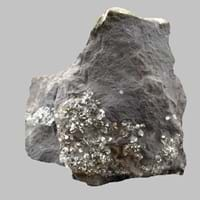Definition
Rhyolite is a fine-grained igneous rock which is rich in silica
Argillites are highly compact sedimentary or slightly metamorphosed rocks that consist largely or wholly of particles of clay or silt but lack the fissility of shale or the cleavage characteristic of slate
Origin
North America
Unknown
Discoverer
Ferdinand von Richthofen
Unknown
Etymology
From German Rhyolit, from Greek rhuax lava stream + lithos stone
From Latin Argilla (clay) and -ite in English which became agrilla+ -ite = Argillite
Class
Igneous Rocks
Sedimentary Rocks
Sub-Class
Durable Rock, Hard Rock
Durable Rock, Soft Rock
Group
Volcanic
Not Applicable
Other Categories
Coarse Grained Rock, Opaque Rock
Fine Grained Rock, Opaque Rock
Texture
Aphanitic, Glassy, Porphyritic
Clastic, Polished
Color
Grey, White, Light Black
Dark Grey to Black, Pink, Red, White
Durability
Durable
Durable
Scratch Resistant
Yes
Yes
Appearance
Banded
Rough and Dull
Interior Uses
Decorative Aggregates, Homes, Hotels, Interior Decoration, Kitchens
Decorative Aggregates, Homes, Interior Decoration
Exterior Uses
As Building Stone, As Facing Stone, Paving Stone, Office Buildings
As Building Stone, Garden Decoration, Office Buildings
Other Architectural Uses
Not Yet Used
Curbing, Whetstones
Construction Industry
Arrowheads, As Dimension Stone, Building houses or walls, Construction Aggregate, Cutting Tool, for Road Aggregate, Knives
Used for flooring, stair treads, borders and window sills.
Medical Industry
Not Yet Used
Not Yet Used
Antiquity Uses
Artifacts
Artifacts, Monuments, Sculpture
Commercial Uses
Gemstone, Laboratory bench tops, Jewelry
Fire resistant, Used to manufracture paperweights and bookends
Types
Pumice Rocks, Obsidian Rocks, Perlite Rocks, Porphyritic Rocks.
Not Available
Features
Acidic in nature, Available in lots of colors
Is one of the oldest rock
Archaeological Significance
Monuments
Not Yet Used
Used
Famous Monuments
Not Applicable
Data Not Available
Sculpture
Not Yet Used
Used
Famous Sculptures
Not Applicable
Data Not Available
Pictographs
Not Used
Used
Petroglyphs
Not Used
Used
Figurines
Not Yet Used
Used
Formation
Rhyolite is a felsic extrusive rock and due to its high silica content, rhyolite lava is very viscous and is volcanic equivalent of granite.
An argillite is a fine-grained sedimentary rock mainly composed of clay particles which forms from lithified muds which contain variable amounts of silt-sized particles.
Mineral Content
Biotite, Feldspar, Hornblade, Plagioclase, Pyroxene, Quartz
Biotite, Chlorite, Feldspar, Micas, Muscovite or Illite, Plagioclase, Pyrite, Quartz
Compound Content
Ca, Fe, Potassium Oxide, Mg, Potassium, Silicon Dioxide, Sodium
Iron(III) Oxide, Potassium Oxide, MgO, Silicon Dioxide
Types of Metamorphism
Burial Metamorphism, Cataclastic Metamorphism, Regional Metamorphism
Not Applicable
Types of Weathering
Biological Weathering, Chemical Weathering, Mechanical Weathering
Biological Weathering
Types of Erosion
Chemical Erosion, Sea Erosion, Water Erosion, Wind Erosion
Chemical Erosion
Grain Size
Large and Coarse Grained
Fine Grained
Fracture
Sub-conchoidal
Conchoidal to Uneven
Streak
Colorless
White to Grey
Porosity
Highly Porous
Highly Porous
Luster
Earthy
Waxy and Dull
Compressive Strength
Not Available
Cleavage
Not Available
Slaty
Specific Gravity
2.65-2.67
2.56-2.68
Transparency
Opaque
Opaque
Density
2.4-2.6 g/cm3
2.54-2.66 g/cm3
Specific Heat Capacity
Not Available
Resistance
Heat Resistant, Wear Resistant
Heat Resistant, Impact Resistant
Deposits in Eastern Continents
Asia
China, India
Bangladesh, China, India, Russia
Africa
Angola, Egypt, Madagascar, Namibia, Nigeria, South Africa
Ethiopia, Kenya, Morocco, South Africa, Tanzania
Europe
Germany, Iceland, Ireland, Italy, Spain
Austria, France, Germany, Greece, Italy, Romania, Scotland, Spain, Switzerland
Others
Not Yet Found
Not Yet Found
Deposits in Western Continents
North America
Canada, USA
USA
South America
Argentina, Bolivia, Chile, Colombia, Ecuador, Peru, Venezuela
Bolivia, Chile, Colombia, Ecuador, Peru, Venezuela
Deposits in Oceania Continent
Australia
New Zealand, Queensland, Western Australia
New South Wales, New Zealand, Queensland, Victoria, Western Australia










